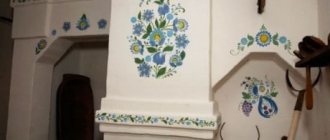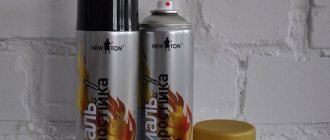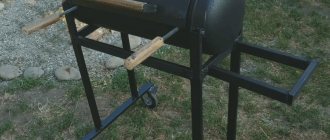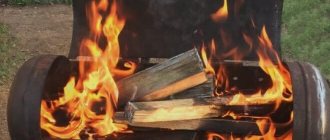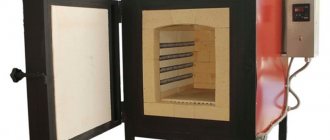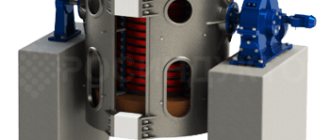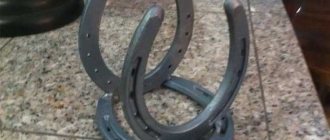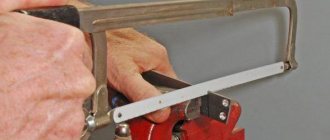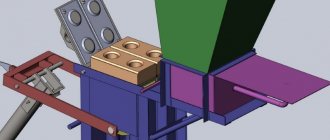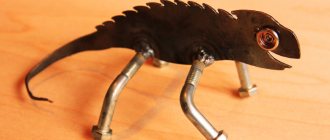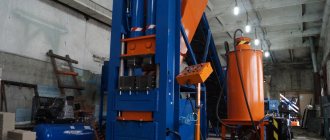What is heat-resistant paint?
The first thing worth noting is that fireproof metal paint for furnaces tolerates high temperatures of 100°C and above. Such coatings have an organosilicon base, which includes fillers, polymers, and coloring pigments that increase its heat-resistant properties.
In order for the paint for stoves to retain its properties for a long time and not be destroyed under the influence of high temperatures, special technology is used for its production. Enamel consists of organic radicals, silicon atoms, aluminum powder and oxygen. All these substances together protect the surface of the stoves from the negative effects of high temperatures, and thanks to organic resins, fire-resistant paint is elastic and quick-drying.
Almost all compositions intended for painting stove structures are made in the form of suspensions based on heat-resistant varnishes that contain silicone and silicon.
Absolutely all elements of the stove are painted, but a number of factors should be taken into account here. Small metal parts and large surfaces are painted with special types of paints that are used for very high temperature conditions. Such compositions are suitable not only for stove structures, but also for barbecues, where the metal is in very close contact with open fire.
Other heat-resistant metal paints for stoves are designed specifically for coating surfaces made of brick or trimmed with stone. Mixtures for those areas that are exposed to thermal stress must withstand heating of at least 350-400 ° C. Thus, even during the burning of ordinary paper, the temperature on its surface is +380-400°C. During an intense flame when burning wood, it reaches up to +400-450°C. It is clear that the degree of heating of the external surfaces is much lower than that of the firebox, but in any case, preference should be given to fire-resistant paint for the stove, which will cope well with heating from 400 to 550°C. Many manufacturers produce paints intended for various purposes, and temperature indicators are indicated on their packaging. That is why there are no difficulties in choosing the appropriate composition.
Reasons for purchasing heat-resistant paint
Heat-resistant paints for fireplaces and stoves have a number of properties and factors, which you can find out in more detail in this table:
| Important factors and properties | Detailed description |
| Heat resistance | Heat-resistant fireplace paint should withstand high heat well. In order to calculate the maximum heating level and the range of temperatures applied to a given composition, it is necessary to familiarize yourself in detail with the information provided by the manufacturer on the packaging or in the instructions supplied with the paint. |
| Good adaptation | The main quality that such a coloring composition must have is resistance to various external influences (sudden temperature changes, rain, snow) and other aggressive factors. |
| Economical | Thermal paint for a fireplace is distinguished by its efficiency. If price comes first for you, we recommend calculating how much paint you need per square meter and then familiarizing yourself with this factor of the chosen base. |
| High-quality composition | The composition must contain exclusively components that are safe for health; they must withstand all operating conditions well and not emit hazardous and harmful decomposition products into the air when the furnace is heated. |
| Easy to use | You can easily and quickly apply any paint to the surface of the heating installation with your own hands. You don’t need to buy an expensive and professional tool to get the job done. All you need to do is buy brushes. |
Important: heat-resistant paint for a fireplace can have a different base and composition (acrylic, silicon-based or liquid glass-based, epoxy or silicone). When choosing, pay attention to the conditions under which it can be used, what temperature range is the maximum permissible, and for what surfaces it is recommended to use this paint composition.
In order for the paint to lie as evenly as possible on the surface and have better adhesion, it is recommended to first prepare the surface, clean, degrease and prime it well.
Varieties
Based on the maximum temperature that heat-resistant paint for stoves can withstand, the following types are distinguished:
- heat-resistant enamel for metal: the maximum temperature it can withstand is 80°C;
- acrylic and alkyd paint: its maximum is 100°C. It contains special pigments. After the enamel is applied to the surface, it does not turn yellow, its color does not fade or fade. Most often it is used to cover iron heaters in the bathhouse. This type is produced in the form of an aerosol, which is very convenient for coating;
- enamel made from epoxy, acrylic, polyurethane compounds with heat resistance up to 200°C;
- heat-resistant metal paint for furnaces with an ethyl silicate or epoxy ester base with metal powder, which tolerates high temperatures well - up to 400 ° C;
- silicone paint: zinc or aluminum powder is added to it: this type of coating can withstand temperatures up to 650°C. It is most often produced in the form of a spray.
Distinctive features of high-temperature paints
It is worth noting that heat-resistant paint for stoves and fireplaces is quite expensive. Many users, in order to save money, paint metal surfaces of structures with oil, enamel paints and water-based paints. However, it is worth knowing the peculiarities of the behavior of such mixtures when heated:
- For example, oil paint, which is made on the basis of drying oil, will initially soften, and at very high temperatures it will simply begin to burn. In any case, there will be a pungent burning smell in the room.
- Regular enamel will dry out and over time it will lose elasticity, which will lead to cracking and crumbling. This entire unpleasant process will be accompanied by an unpleasant aroma.
- Water-based paint, which is applied in a thick layer, in the process of evaporating moisture from it, will begin to crack and crumble in the shortest possible time, and many small cracks will appear on a thin layer.
After two or three firings of the stove or fireplace, ordinary paints will turn yellow. In addition, it should be remembered that rust will have a negative impact on them from the inside; it will corrode the paint and appear on the outside. Such compositions will not protect heated surfaces, and may even damage not only the walls and structural elements, because Acrid fumes have a very negative impact on human health.
Painting the fireplace after puttying
In addition, such a coating will not be enough even for one heating season, and after that the paint on the metal/bricks will remain in areas that will be very difficult to remove due to the high porosity of the material. Cleaning oil and enamel paint from brick is also very difficult, and under no circumstances should you paint over it, since in any case it will release harmful substances and negatively affect the renewed outer layer. To clean, you will have to use a wire brush or a sander with a special attachment.
Requirements for paints for stoves and fireplaces
When choosing heat-resistant paint, be sure to pay attention to a number of parameters:
- ability to withstand high temperatures well;
- resistance to aggressive environments;
- consumption per 1 m²;
- pay attention to the components that make up the dye;
- ease of paint application.
Heat-resistant paint and varnish compositions are divided based on the base component on which they are made:
- acrylic;
- silicon;
- silicone;
- epoxy resins.
The performance characteristics of the entire composition depend on the main component.
In order to make the right choice of heat-resistant enamel, it is necessary to take into account the type of surface that is being painted and its application. The paint can be used to paint bricks or stone near the fireplace, metal parts of stoves, heating boilers, barbecues, barbecues, etc.
You can find out which paint is best to use for painting batteries here
Enamel for non-ferrous and ferrous metals is a paint with various compositions. This point must be taken into account when choosing. For each individual type of surface, the composition of the enamel may be different; all information can be found on the packaging. Enamels that contain heat-resistant glass and composite materials have the highest heat resistance. For painting areas that are not exposed to high temperatures, any type of heat-resistant metal paint can be used, even with the lowest heat resistance ratings. When choosing enamel, be sure to take into account the fact whether the surface is primed before the procedure. This is due to the fact that not all materials are compatible with primer.
When choosing heat-resistant paint for brick stoves, it is important to consider the possibility of painting not only this material with enamel, but also concrete, wood, and plastic. The price of heat-resistant enamel can say a lot. Firstly, it speaks about the nature of the components used, and secondly, it indicates what level of temperature the paint can withstand. The price also reflects the container of the material and the type of mixture (liquid or aerosol).
When choosing enamel, special attention should be paid to the quality characteristics. The main thing is that the heat-resistant paint can withstand chemical exposure well and can protect metal products from rust. It is also very important that the substance does not emit harmful substances, and also tolerates temperature changes well. Water-based formulations are considered the safest.
It is also important to take into account the fact that one type of paint may not be enough, because... for metal parts you need one type, and for brick a completely different one. If the stove is both indoors and outdoors, you also need to use different types of enamel.
What is used today?
Times have changed and no one cooks whitewash today. Modern owners of Russian stoves and fireplaces prefer other means. Let's look at each option in more detail.
Natural drying oil
Natural drying oil is used as stove paint - this coating does not change the color of building materials, but slightly changes the shade to a darker side.
Organosilicon paint
Along with drying oil, silicone paints are widely used for brick stoves. These compositions have many advantages:
- high adhesion to any materials;
- coating strength;
- resistance to moisture;
- high durability;
- heat resistance (withstands more than 200 cycles of temperature changes).
Alkyd based varnish
PF-283 varnish is also often used for painting fireplaces. It is a mixture that includes alkyd resins, modified vegetable oils, fatty acids and other additives. The varnish is mixed with turpentines in equal proportions. This increases the durability of the coating. After drying, a glossy transparent and very durable layer is formed on the surface.
Heat resistant paint
The most popular option is the use of heat-resistant paints for stoves and fireplaces. The material has a huge number of advantages:
- large range of colors;
- this is a heat-resistant paint - it can withstand temperatures up to 600 degrees;
- the surface of brick stoves and fireplaces is reliably protected from oxidation;
- the material has increased strength and wear resistance characteristics;
- performance qualities are maintained for more than 10 years.
Heat-resistant paint also has disadvantages, among which we especially need to highlight its aggressive composition, unpleasant odors, and long drying time.
Due to the presence of toxic substances in the composition, you should be careful when working with thermal paint
In the video: DIY heat-resistant paint.
Features of paints for various surfaces
Paint for brick surfaces
The following requirements apply to heat-resistant paints for ovens:
- ability to withstand temperatures up to 300°C;
- resistance to steam and moisture, especially for stoves located in bathhouses;
- resistance to cracking and fading.
Organosilicon compounds, which include enamels KO-168, KO-8101, KO-813, etc., have all these properties.
For stoves and fireplaces made of brick installed in residential premises, an attractive appearance is a very important criterion, since such structures very often act as a decorative element.
For example, heat-resistant transparent varnish is applied to fireplaces or stoves that are decorated with artificial or natural stone.
Paint for metal surfaces
Recently, small-sized steel/cast iron stoves and fireplaces have become widely popular. They do not take up much space and are very neat in appearance.
Such devices, as well as metal elements of brick heating structures, require a special approach when choosing paint, since metals are susceptible to rust. That is why it is important to choose the appropriate composition. Another property of them is expansion under the influence of high temperatures; in addition, they can be destroyed by stray currents. In connection with all of the above, it is important that heat-resistant paint for metal products has the following properties:
- the paint must withstand temperatures up to 750°C;
- during heating, it should not emit harmful substances and unpleasant odors;
- it is very important that the composition is elastic and does not crack;
- high degree of anti-corrosion properties, thanks to which you can apply paint
- on areas that have not been cleaned of rust, without prior priming;
- must be resistant to processes due to which the material may fade or turn yellow;
- for stove structures that are installed outdoors, you need to choose a paint that, among other things, will also withstand negative temperature conditions well;
- Also, the paint should not be afraid of an aggressive external environment. It is very important that the composition has the ability to protect the product from moisture, water, and active chemical compounds.
All these qualities are inherent in heat-resistant enamel paints KO-8104, KO-811 and others.
Paint selection
The choice of paint composition primarily depends on what material the chimney is made of, because paint for bricks will not be able to fully protect the metal from adverse conditions. Therefore, before purchasing a paint and varnish product, you should carefully read its characteristics and find out what materials it is intended for. But there are also uniform requirements for all paints and varnishes:
- Drying time. A very important parameter for outdoor work, because with a long drying time, the applied coating can be damaged by weather conditions.
- Temperature range. It is necessary to take into account the approximate temperature of the gases passing through the pipes and the minimum temperature drop in the region.
- Conditional viscosity. The optimal indicator would be 36 conventional degrees.
- Validity. It is determined how long the protective qualities of the dye are maintained.
If all indicators are selected correctly, then a dense thermal and moisture-resistant film is formed on the pipe surface, which will last for a long time.
Popular paints and varnishes have the following properties:
- resistance to degradation caused by oxidation,
- resistance to aggressive atmosphere,
- low surface tension
- water-repellent ability,
- corrosion resistance,
- heat resistance.
The maintenance-free service life increases to 15 years thanks to these indicators. It is for this reason that paint and varnish materials are used to protect many objects:
- domestic and industrial heat exchangers,
- pipelines with superheated steam,
- chimneys,
- collectors.
All heat-resistant paints and varnishes in liquid form are highly toxic, and when applying them you must use protective equipment (respirator, gloves and clothing covering the skin).
A good composition for strengthening the surface are organosilicon materials with high moisture-repellent properties, which also have good adhesion to various building materials.
To paint the outside of chimneys, the following coatings are suitable:
- The best option for priming the surface is gray enamel KO-8111, which has increased heat resistance.
- For bright signal painting, OS-12-03, red and white paints are usually used.
KO-8111 paint perfectly withstands temperatures up to 620 °C, so it is often used when painting pipes of boiler houses and other industrial facilities. It is ideal for external anti-corrosion work on heating and water supply pipelines. This enamel is also used for painting steam lines and other process pipes.
KO-8111 enamel has good moisture resistance and is also resistant to temperature changes. As the temperature increases, the paint applied to the surface even becomes stronger.
For bright signal painting of pipes, red and white paint is applied to the dried, primed surface. This composition is applied in two or three layers, and the paint layer is 35-55 microns thick, with a consumption of 125-160 g/m2 per layer.
Organosilicon paints and varnishes are also considered a suitable material for painting. They have a lot of advantages:
- Synthetic polymers have high durability and resistance to damage and abrasion.
- The use of this material guarantees increased durability of the coating, since organosilicon paints are unique in their heat resistance. They are able to withstand long-term operation at temperatures up to 720 °C.
- This paint and varnish material has low surface tension. It forms a coating that has high weather resistance as well as reduced retention of dust and dirt.
These materials are used to paint:
- car mufflers, various engine parts and even jet engine nozzles,
- heat exchangers, manifolds and pipelines,
- metal and brick pipes of stoves in houses, saunas.
Once the silicone paint dries, it forms a very durable coating. It is fire resistant and has many other protective properties.
When the primer is dry, you can start painting. Painting is carried out along the perimeter and starts from the top.
Anti-corrosion protection is of great importance for the service life of the chimney. At high operating temperatures and aggressive environments, the protective paint layer must be resistant to these harmful factors. Therefore, painting chimneys is a necessity.
Brick chimneys
Nowadays brick is less popular, but until recently chimneys were made mainly of it. But how to paint brick? First of all, the structure must be prepared:
- tighten loose bolts on the connecting clamps,
- remove old paint or lime,
- wash away soot, soot and dirt,
- restore the damaged layer of plaster (it is not necessary to completely change it, just apply the mixture to the damaged areas and wait for it to dry),
- Apply at least 2 coats of primer (more is allowed).
After the primer has dried, you can paint. It is recommended to apply paint on brick in 2 layers to ensure greater strength and color saturation.
Ceramic pipes
This is a construction novelty consisting of a ceramic pipe, a layer of insulation and finishing made of foam concrete or metal. It is considered the most heat-saving.
The painting method depends on what the insulating layer is covered with:
- foam concrete is processed using the same technology as brick,
- the metal is painted in accordance with the rules for painting a metal base described above.
When choosing dyes for ceramic pipes, heat resistance does not play a big role, because the insulation layer reduces the heating of the outer surface.
Reinforced concrete
In private houses, reinforced concrete structures are extremely rare; most likely, this will be an industrial pipeline running through the site, delivering gas or water to the house. You will have to choose a color for it not according to your taste, but in accordance with the requirements of the marking color.
The process of protection and finishing is carried out in the same way as when processing and applying paints and varnishes to a metal chimney. The main thing is not to forget about anti-corrosion treatment and degreasing, because the uninterrupted supply of utilities depends on the safety of the pipeline.
If the paint is selected in accordance with all requirements and all processing steps are followed, then after the composition dries, a durable non-toxic film will be obtained that will protect the structure for 5-15 years. The period of protection depends on atmospheric influences, the internal temperature of the chimney and the quality of the purchased paint and varnish.
Technology of coating products with heat-resistant paint
The first thing you need to do before painting stoves is to thoroughly prepare the surface. This requirement cannot be neglected, since the quality of all work performed will depend on this stage. The sequence of actions is as follows:
- The stove must be thoroughly cleaned of any remnants of the old coating, various chemicals, oil traces, etc. Products can be coated with enamel under environmental conditions from +40°C to -15°C, and it is important that humidity standards are met.
- The next step is to clean the surface from rust until you see a metallic sheen. This procedure is performed using sandpaper or a drill with a brush attachment. Upon completion of the procedure, the surface should be thoroughly washed and dried.
- Next, you need to degrease the structure using a solvent. After the surface has been treated with a solvent, you need to wait 6 hours (if the work was carried out outdoors) and a day (if the entire list of procedures was carried out indoors). After this, you can begin to cover the surface with paint.
- The helmet must be applied in several layers and in different directions; the second layer can be covered only after the first has completely dried. It is important that the outer covering of the metal case is not wet. If after a short period of time you see that the paint begins to peel off, it means that the composition was chosen incorrectly for this material. Working with an aerosol is slightly different from painting with a brush. All the details are usually included in the instructions.
Manufacturers
Currently, specialized stores have a very large selection of heat-resistant paints and varnishes, which are produced by different manufacturing companies. Products are represented by a wide range of both Russian and foreign production. We have already described the most popular types of paints suitable for brick and metal products. Now let's look at their characteristics.
Enamel KO-8101
The heat resistance of this paint ranges from 400 to 800°C. It is considered universal, because It can be coated on different surfaces: brick, metal, concrete.
Heat-resistant anti-corrosion enamel KO-8101
For metal products, experts advise purchasing the anti-corrosion compound KO-8101. Before coating, it is not necessary to carry out preparatory procedures. When heated, such paint does not form any harmful fumes, so it is considered an absolutely safe product. A very important advantage of this composition is the fact that you can work with it even at sub-zero temperatures. Such paints are characterized by high protection rates and a wide variety of colors, so everyone will find an option here to their liking. The manufacturer provides a guarantee for its products for a period of 15 years.
This type of paint is produced by many domestic and European companies, “Termika”, “Karst” and others.
All manufacturers use the same manufacturing technology. Only the color scheme may differ.
Solvents used to create paint are xylene and toluene.
The composition consumption for a three-layer surface coating is 120÷240 g/m². The drying period of the coating at a temperature of 150±2 °C is no more than half an hour, at 20±2 °C - no more than two hours. This enamel can be applied by spraying using a spray gun, or manually - with a roller or brush, in 2-3 layers, with each layer drying for 0.5 to 2 hours, depending on the ambient temperature.
Enamel KO-811
Heat-resistant enamel KO 811
This heat-resistant enamel is used for painting steel, cast iron, titanium surfaces, the heating temperature of which can reach 400°C. The paint looks like a suspension, which contains pigments dissolved in silicone varnish.
Usually KO-811 is sprayed. To do this, the enamel must be diluted with a stabilizer 100:6 for white paint and 100:7 for other colors. The mixing process takes place shortly before application.
The finished composition must be consumed within 24 hours.
The enamel coating must be well cleaned of dirt and grease. In order to rid the surface of all these traces, solvents are used.
The solvents used for this enamel are R-5A, toluene and xylene. The paint can be diluted: KO-811 by 30÷40%, KO-811K (white) by 70÷80%, other colors by 40÷50%. Enamel consumption varies from 100 to 250 g/m², depending on the color. The drying time of the painted surface at temperatures of 200, 150 and 20 degrees is no more than 2 hours. This heat-resistant paint is produced by Termika, NPF Emal LLC and other companies.
Enamel KO-168
KO-168 enamel with silicone varnish
This type of composition is intended for use at temperatures not exceeding 150°C. This means that this enamel can be used to cover brick products and metal parts that are located at a sufficient distance from the firebox. The functions of this enamel are not only protective, but also decorative. Manufacturers offer various colors of KO-168 enamel.
Subject to all operating requirements, such a composition will act as excellent protection for any material. This is due to the fact that such a coating is characterized by high moisture resistance and frost resistance. In addition, it is not afraid of exposure to ultraviolet rays, which means the enamel will retain its original shade for a long time.
KO-168 enamel is also a suspension containing pigments, fillers and additives mixed with silicone varnish. Paint consumption depends on the chosen color: for red and white enamel – 150 g/m²; for yellow – 180 g/m²; for blue – 140 g/m²; for brown, blue, light green, beige – 130 g/m²; for green – 120 g/m²; for black – 80 g/m².
KO-168 enamel is produced in ready-to-use form. If it is necessary to dilute it, toluene or xylene solvents are used. The drying time of enamel at a temperature of 20 ± 2 °C is about a day. If a metal surface is to be painted, it must be cleaned of various contaminants and degreased - also with xylene, solvent or acetone, and then the surface is wiped dry. Painting with this composition can be carried out at air temperatures from -30 to +40 degrees.
Heat-resistant paints "Tikkurila"
Heat-resistant paint Tikkurila Termal black
Tikkurila is a famous company from Finland, whose main specialization is the production of various paints and varnishes. The company's product range includes black and silver shades.
Silver enamel consists of varnish and aluminum powder. This mixture is designed to be heated up to 900°C; therefore, it can be used for painting metal surfaces. You can coat stoves that are located both in the house and on the property with this paint. This is due to the fact that Tikkurila paint tolerates environmental influences well.
Black paint is only suitable for surfaces heated to 400°C. The composition is applied by spraying or manually with a brush.
Enamel "Certa"
Certa heat-resistant enamel up to 700°C
Certa is a domestic manufacturer that produces heat-resistant paint for metal structures, since the composition is characterized by high anti-corrosion properties.
The paint well protects both individual parts of the structure and the entire product from moisture, overheating and aggressive influences. Temperature range - -60°С - +90°С. The composition, which is available in cans, is applied with a brush, and in aerosol cans it is sprayed.
General concepts about heat-resistant paints
To ensure that the paint applied to the surface does not lose its original qualities for a long time under the influence of high temperatures, heat-resistant paints and varnishes are produced using special technology. They contain protective components, thanks to which the treated brick walls of stoves or fireplaces, and even outdoor barbecue complexes, are able to withstand aggressive external factors such as moisture, precipitation, dirt and dust. A layer is formed on metal elements that can protect them, among other things, from oxidative corrosion processes.
Heat-resistant paint in aerosol packaging
Almost all compositions for painting stoves and fireplaces are produced in the form of suspensions based on heat-resistant varnishes containing silicone and silicon.
As mentioned above, all parts of the structure can be painted, but for small metal elements and large surfaces, special types of paints are produced that are designed for extremely high temperatures. Such compositions are suitable not only for stoves, but also for barbecues, where the metal experiences maximum impact from contact with open fire.
Cast iron oven door, painted with a heat-resistant compound
Other heat-resistant paints are made specifically for treating brick or stone surfaces.
Compositions for coloring materials exposed to thermal effects must withstand heating of at least 350-400 degrees. So, even when ordinary paper burns on its surface, the temperature is + 380-400 degrees; on an intense flame when burning wood, it reaches + 400-450 degrees. Well, when coal is used as fuel, in the phase of its flameless combustion, a temperature is created on its surface that reaches + 900-1000 degrees.
Of course, the external surfaces of heating devices heat up much less than the firebox, but in any case you need to choose heat-resistant paints that can withstand from 400 to 550 degrees of heat.
Why should you buy heat-resistant paint?
It should be noted that heat-resistant paints always have a fairly high price, and, wanting to save money, some stove owners try to use oil, enamel paints or water-based paints to paint their metal parts. However, you need to know how these compounds behave when heated:
Conventional paints are not suitable for extreme temperature operating conditions.
- For example, oil paint made from drying oil will first soften, and at very high temperatures it will begin to burn. Well, an unpleasant smell will come from it in any case.
- Ordinary enamel will dry out, lose elasticity and, accordingly, crack, while also emitting an unpleasant “aroma”.
- Water-based paint, applied in a thick layer, will quickly crack and crumble when moisture evaporates from it, and a thin layer will be covered with a fine network of cracks.
After two or three firings of the stove or fireplace, ordinary paints will change color and acquire an unpleasant yellowness. In addition, you need to remember that rust will negatively affect them from the inside, “eating” the paint and showing up on the outside. Such paints will not protect heated surfaces, and may even cause harm not only to the walls and parts of the stove, but also to the health of people who will breathe in caustic fumes.
In addition, such a coating will barely be enough even for one heating season, and after that the paint on the metal, and possibly on the bricks, will remain in areas that will be difficult to remove due to the porosity of the material.
It will also be difficult to remove oil or enamel paint from brickwork, and you cannot paint over it, as it will still release harmful substances and have a bad effect on the top renewed layer. You will have to clean the surfaces with a wire brush or a grinder with an appropriate attachment.
Therefore, you should not take risks, otherwise you will end up paying much more than the cost of high-quality heat-resistant paint.
Basic requirements for paints for stoves and fireplaces
When choosing heat-resistant paint, you need to consider several factors:
- Resistance of the composition to high temperatures. The maximum heating level is indicated on the packaging.
- Resistance to aggressive environments.
- Material consumption, that is, the amount required to paint 1 m².
- Composition of the dye.
- Ease of paint application.
Heat-resistant paint and varnish compositions are divided according to the base component on which they are made:
- Acrylic base.
- Silicon-containing (potassium or sodium liquid glass).
- Epoxy resins.
- Silicone.
The base of heat-resistant paint directly affects its performance.
The compositions themselves, made on an epoxy or silicone basis, are not very resistant to high temperatures. Therefore, to enhance heat resistance, aluminum or bronze powder is added to the paint, after which the composition can be used at temperatures up to 400-650 degrees.
Heat-resistant paints are also divided according to their purpose, that is, according to the type of surface on which they are applied.
Paint for brick surfaces
Painting the brick surface of the stove
The following requirements apply to heat-resistant paints used for coating brickwork:
- resistance to temperatures reaching up to 300 degrees;
- resistance to steam and moisture, especially for stoves installed in bathhouses;
- crack resistance;
- resistance to fading.
Organosilicon compounds, which include enamels KO-168, KO-8101, KO-813, etc., have all these qualities.
A fireplace or stove can be coated with a transparent heat-resistant varnish, which will preserve the natural appearance of the stone
For brick stoves and fireplaces installed in residential premises, an important factor is the aesthetic appearance, since many heating structures also play a decorative role in interior design.
Transparent varnish for brick surfaces
For example, a fireplace or stove, decorated with artificial or natural stone, which you want to preserve in its original form without painting, is coated with a heat-resistant transparent varnish called “invisible”.
Paint for metal surfaces
In recent years, the installation of steel or cast iron compact stoves and fireplaces has become increasingly popular. They do not take up much space and look aesthetically pleasing and stylish, decorating any interior with their presence.
Metal stoves and fireplaces require special care
This type of appliance, as well as the metal elements of brick heating structures, require a special approach in choosing paint, since metals are quite “capricious” and rust may appear on them during operation. In addition, they expand quite significantly under the influence of high temperatures, and can also be destroyed by stray currents. Therefore, heat-resistant compounds for metal parts must have the following qualities:
- the paint must withstand temperatures up to 750 degrees;
- when heated, the composition should not emit toxic substances or strong unpleasant odors;
- the paint must have sufficient elasticity so that when heated and cooled it is “movable” and does not crack;
- it is desirable that the paint has high anti-corrosion qualities, which will allow it to be applied to a surface that has not been cleaned of rust without prior priming;
Heat-resistant paints filled with metal powder
- resistance to phenomena that affect color changes - fading and yellowing;
- for stoves installed outdoors, paint is selected that is also resistant to negative temperatures;
Particular attention to paints used on stoves located in the open air
resistance to aggressive external environments, since the composition must reliably protect the metal from atmospheric humidity, water and active chemical compounds.
Characteristics of heat-resistant paints
Nowadays, specialized stores stock a wide range of heat-resistant paints and varnishes from various manufacturers, both domestic and foreign, with a large selection of decorative designs. Mentioned above are some of the most popular heat-resistant paints suitable for brick and metal stove surfaces. Now it’s worth considering their characteristics in more detail.
Rating of heat-resistant paints
| Photo | Name | Rating | Price |
| #1 | Paint "NEW TON" | 100 / 100 | |
| #2 | Enamel "Certa" | 98 / 1002 - votes | |
| #3 | "Tikkurila" | 98 / 100 | |
| #4 | Enamel KO-814 | 97 / 100 | |
| #5 | Enamel KO-168 | 95 / 100 | |
| #6 | Enamel KO-811 | 94 / 1001 - voice | |
| #7 | Enamel KO-8101 | 91 / 1001 - voice |
What would you choose or recommend?
Enamel KO-8101
Enamel KO-8101 is a paint that is produced with heat resistance of 400, 600, 800 degrees. It can be called universal, since it is suitable for application to various surfaces - it can be concrete, brick, metal - from stove elements to radiators, structures located both under the roof and in the open air.
Enamel KO-8101
For metal parts, it is recommended to choose the anti-corrosion paint composition KO-8101 - it will allow you to coat surfaces without prior preparation. After drying when heated, the paint does not emit harmful fumes, so it can be called a safe product.
The big advantage of this paint is that you can work with it even at subzero temperatures.
Thanks to its high protective qualities and variety of colors, this enamel is able to satisfy the needs of the most demanding customers. The certified technology of its manufacture allows the manufacturer to provide a guarantee for a period of 15 years.
KO-8101 paint is produced by many Russian and foreign companies, Termika, Karst and others. All manufacturers adhere to the same manufacturing technology and recipe. The only difference can be the number of colors of the composition.
This enamel was tested at the Mosstroy Research Institute for heat resistance, adhesion, waterproofing abilities and resistance to aggressive environments.
The solvents used for this paint are xylene and toluene.
The consumption of the composition for a three-layer surface coating is 120-240 g/m².
The drying period of the coating at a temperature of 150±2 °C is no more than half an hour, at 20±2 °C - no more than two hours.
This enamel can be applied by spraying using a spray gun, or manually - with a roller or brush, in 2-3 layers, with each layer drying for 0.5 to 2 hours, depending on the ambient temperature.
Prices for paint enamel KO-8101
Enamel KO-8101
Heat-resistant enamel KO-811 and KO-811K is intended for painting steel, cast iron, and titanium surfaces that can be heated to temperatures of 400 degrees. The paint is a suspension consisting of pigments dissolved in silicone varnish.
Heat-resistant enamel KO-811
This composition is most often applied by pneumatic spraying. To do this, the enamel is diluted with a stabilizer 100:6 for white paint and 100:7 for other colors. The mixing process is carried out immediately before use, and the finished composition must be used within 24 hours.
Enamel is applied to a metal surface that has been cleaned of dirt, fats, water-soluble salts and oils using acetone, solvent or other solvents. Before applying paint, the metal is wiped with a clean and dry cloth.
The solvents used for this enamel are R-5A, toluene and xylene. The paint can be diluted: KO-811 by 30-40%, KO-811K (white) by 70-80%, other colors by 40-50%.
Enamel consumption varies from 100 to 250 g/m², depending on the color.
The drying time of the painted surface at temperatures of 200, 150 and 20 degrees is no more than 2 hours.
This heat-resistant paint is produced by Termika, NPF Emal LLC and other companies.
Prices for paint enamel KO-811
Enamel KO-811
KO-168 enamel is designed for operation at temperatures up to 150 degrees, which means that during the process of painting the stove it can be used for brick surfaces and metal elements located remotely from the combustion chamber. Enamel performs not only protective, but also decorative functions, as it is produced in a variety of colors. In addition to painting the stove, this paint is used for facade work, and therefore is perfect for finishing barbecue stoves located in garden areas.
The heat resistance qualities of enamel KO-168 are not so pronounced
If the operating conditions for painted surfaces are observed, the paint will provide excellent protection for any material from which the stove is built, since the coating has hydrophobic, moisture-resistant and frost-resistant properties. In addition, the paint is highly resistant to ultraviolet rays, which means the enamel will retain its original color for a very long period.
KO-168 enamel is also a suspension consisting of pigments, fillers and targeted additives mixed with silicone varnish.
Paint consumption depends on the chosen color:
- for red and white enamel – 150 g/m²;
- for yellow – 180 g/m²;
- for blue – 140 g/m²;
- for brown, blue, light green, beige – 130 g/m²;
- for green – 120 g/m²;
- for black – 80 g/m².
KO-168 enamel is produced in ready-to-use form. If it is necessary to dilute it, toluene or xylene solvents are used.
Drying time for enamel at a temperature of 20 ± 2 °C is about a day.
If a metal surface is to be painted, it must be cleaned of various contaminants and degreased - also with xylene, solvent or acetone, and then the surface is wiped dry. Painting with this composition can be carried out at air temperatures from -30 to +40 degrees.
Prices for enamel KO-168
Enamel KO-168
Enamel KO-813 and KO-814
Enamels KO-813 and KO-814 are produced on the basis of varnishes KO-85 and KO-815, using aluminum powder PAP-1 and PAP-2. They are intended to protect metal products from various contaminants, aggressive influences and mechanical damage. These heat-resistant enamels can withstand temperatures from -50 to +500 degrees.
Heat-resistant enamel KO-814 is intended for metal elements of stoves and fireplaces
Drying time for an enamel-coated surface at temperatures from 20±5 to 150±5 degrees is about 2 hours.
Before using the enamel, it is necessary to mix the two components in certain proportions, so KO-813 should consist of 94 parts of KO-815 varnish and 6 parts of aluminum powder. KO-814 paint is mixed in proportions of 100 parts KO-85 varnish and 5 parts aluminum powder. The finished paint must be used within 8 hours from the moment of mixing.
To dilute this enamel, the same solvents are used - toluene, xylene and solvent.
Before applying paint, the surface must be prepared by cleaning it from dirt and greasy stains. Surfaces are degreased using solvents used to dilute paint.
The finished paint must be thoroughly mixed until homogeneous without sedimentary formations or lumps.
Today you can find other heat-resistant paints from domestic and foreign manufacturers, which have gained popularity due to the high quality of their products.
Prices for enamel KO-813
KO-813
Prices for enamel KO-814
KO-814
Tikkurila is a well-known Finnish company specializing in the production of a variety of paints and varnishes. The product range also includes heat-resistant varieties - black and silver.
Black heat-resistant paint "Tikkurila"
The silver version of the enamel consists of two components - varnish and aluminum powder. This composition is designed to heat up to 900 degrees, so it can be used for painting metal surfaces. The paint can be used for stoves installed inside the house and in the garden, as it withstands any influence of the external environment.
Heat-resistant black paint is designed only for surfaces heated to +400 degrees. It can be applied to the surface by spraying or manually with a brush.
Prices for heat-resistant paints "Tikkurila"
Heat-resistant paints "Tikkurila"
"Certa" is a Russian manufacturer that produces heat-resistant paint designed to protect metal surfaces, as it has pronounced anti-corrosion qualities. However, such enamel can also be used for application to other materials.
“Certa” enamel in various factory packaging
The coloring composition is able to protect both the entire structure and its individual elements from overheating, moisture and aggressive influences. It is designed for temperatures from -60 to +900 degrees. This paint is produced in cans for brush application and in 520 ml aerosol cans.
Prices for Certa enamel
Enamel "Certa"
“NEW TON” is an enamel from a Ukrainian manufacturer, which is popular on the Russian market due to the high quality and relatively inexpensive cost of its products. The paint is available in aerosol cans.
Aerosol cans of paints “NEW TON”
This heat-resistant enamel is used for metal parts of the stove and can withstand temperatures of + 600 degrees. This paint contains anti-corrosion components that will protect metal surfaces from various external influences, from rust formation and from overheating. After drying, the paint retains its elasticity and therefore does not crack or deform due to temperature changes.
Before applying this composition, the surface is degreased and dried, but it is not required to prime it before painting.
Then, the can is shaken well and the enamel is sprayed onto the surface from a distance of 250-300 mm.
The paint reveals all its capabilities after the initial heating of the coated surfaces to +200 degrees for 20-25 minutes.
Prices for paint “NEW TON”
new ton heat resistant paint
In conclusion, it must be said that due to the variety of colors of heat-resistant enamels, several shades can be used to paint the stove, which will make this structure a real decoration of the interior or garden area.
Since heat-resistant enamels are not cheap, before purchasing you should carefully study their performance characteristics and instructions for use so that you do not have to make a repeated purchase.
Rules for painting a stove
